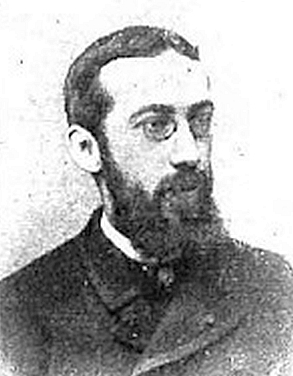Wenceslao Ramírez de Villa-Urrutia, 1st Marquis of Villa-Urrutia facts for kids
Quick facts for kids
The Most Excellent
Wenceslao Ramírez de Villa-Urrutia
1st Marquis of Villa-Urrutia
|
|
|---|---|
 |
|
| Minister of State | |
| In office 27 January 1905 – 23 June 1905 |
|
| Preceded by | The Marquis of Aguilar de Campoo |
| Succeeded by | Felipe Sánchez Román |
| Seat f of the Real Academia Española | |
| In office 4 June 1916 – 10 April 1933 |
|
| Preceded by | Luis Coloma |
| Succeeded by | Miguel Artigas |
| Personal details | |
| Born | 17 February 1850 Havana, Cuba, Spain |
| Died | 10 April 1933 (aged 83) Madrid, Spain |
| Nationality | Spanish |
| Political party | Republican |
| Spouses |
|
| Children | Fernando Ramírez de Villa-Urrutia, 2nd Marquis of Villa-Urrutia |
| Profession | Politician, Diplomat, Historian Royal Academy of History |
Wenceslao Ramírez de Villa-Urrutia, 1st Marquis of Villa-Urrutia (born in Havana in 1850 – died in Madrid in 1933) was an important Spanish noble, politician, and diplomat. He held a very important job as the Minister of State for a few months in 1905. This was during the time when Alfonso XIII of Spain was king.
Contents
A Life in Diplomacy
Wenceslao Ramírez de Villa-Urrutia was a very busy person. In 1905, he became a Senator for life. This meant he would always be a part of the Spanish parliament.
He worked as an Ambassador for Spain in many different countries. An ambassador is like a country's main representative in another country. He was the Spanish Ambassador to:
- The United Kingdom (from 1906 to 1912)
- France (from 1912 to 1914)
- Italy (from 1916 to 1923)
He also served as a special minister, called a plenipotentiary minister, in cities like Constantinople (now Istanbul), Athens, and Brussels. This role meant he had full power to represent Spain in important talks.
For all his hard work and service to Spain, he received special awards. These included the crosses of the Order of Isabella the Catholic and the Order of Charles III. He also got the Cross of Naval Merit for his military service.
A Member of Important Academies
Beyond his political and diplomatic roles, Ramírez de Villa-Urrutia was also a respected scholar. He was a member of two very important groups in Spain:
- The Royal Academy of History: This group focuses on studying and preserving Spanish history.
- The Royal Spanish Academy: This academy is in charge of making sure the Spanish language is used correctly.
Being a part of these academies showed how much he knew about history and language.
His Books and Writings
Wenceslao Ramírez de Villa-Urrutia wrote many historical books. These books often focused on Spain's past and its relationships with other countries. Some of his well-known books include:
- La conferencia de Algeciras (The Conference of Algeciras) (1906): This book was about an important meeting that happened in 1906.
- Relaciones de España e Inglaterra durante la Guerra de la Independencia (Spanish and English Relations during the War of Independence) (1911): This book looked at how Spain and England worked together during a big war.
- Apuntes para la historia diplomática de España (Notes for the Diplomatic History of Spain) (1914): This book shared his thoughts on Spain's history of dealing with other nations.
- Las mujeres de Fernando VII (Women of Fernando VII) (1916): This book was about the wives of King Fernando VII.
- La reina María Luisa, esposa de Carlos IV (Queen Maria Luisa, wife of Carlos IV) (1927): This book focused on Queen Maria Luisa, who was married to King Carlos IV.
- Madame de Staël (1930): This book was about a famous French writer.
- Fernando VII, rey constitucional, y Fernando VII, rey absoluto (Fernando VII, constitutional king, and Ferdinand VII, absolute king) (1931): This book explored the different ways King Fernando VII ruled.
- Lucrecia Borja, Le Reina Gobernadora (Lucrezia Borgia, the Ruling Queen): This book was about a powerful woman from Italian history.
His writings helped people learn more about important historical events and figures.
Images for kids
-
The Marquis of Villa-Urrutia wearing the sash of the Order of Charles III
| Political offices | ||
|---|---|---|
| Preceded by The Marquis of Aguilar de Campoo |
Minister of State 27 January 1905 – 23 June 1905 |
Succeeded by Felipe Sánchez Román |
See also
 In Spanish: Wenceslao Ramírez de Villa Urrutia para niños
In Spanish: Wenceslao Ramírez de Villa Urrutia para niños


